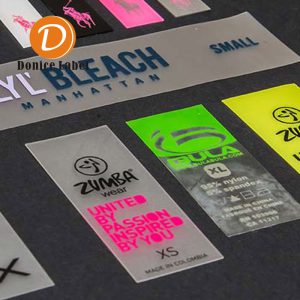Legal care labeling
Legal Care Labeling: Meeting Regulatory Requirements for Garment Care
Legal care labeling refers to the practice of ensuring that clothing labels comply with legal standards and regulations regarding garment care instructions. These labels provide essential information on how to properly care for clothing, including washing, drying, ironing, and dry cleaning instructions. Legal care labeling is not just about ensuring the longevity of garments, but also about protecting consumers, ensuring compliance with industry standards, and meeting legal requirements in various markets.
Key Components of Legal Care Labeling:
Compliance with Local and International Regulations:
Different countries have their own regulations for care labeling. For example, in the U.S., the Textile Fiber Products Identification Act (TFPIA) requires fiber content labeling, while in Europe, EU Regulation 1007/2011 dictates that textile products must disclose fiber composition.
GINETEX (International Association for Textile Care Labelling) provides a global standard for care symbols, making it easier for brands to meet international labeling requirements.
Clear Care Instructions:
The law often mandates that care labels contain clear instructions regarding how the garment should be cleaned, dried, and ironed. These instructions are typically displayed using standardized symbols (e.g., washing machine icon, temperature symbols, etc.).
The labels must be readable and not misleading, providing accurate care details to avoid consumer complaints or misuse of garments.
Textile Fiber Content:
Legally, most countries require labels to disclose the fiber content of the garment (e.g., cotton, polyester, wool). This helps consumers make informed decisions about the fabric, especially concerning allergies, durability, and care requirements.
Fiber Content Disclosure: In the U.S., the Federal Trade Commission (FTC) mandates that fiber content must be listed in percentages (e.g., 60% cotton, 40% polyester).
Multilingual Labels:
In regions with diverse linguistic populations, legal care labels may need to include instructions in multiple languages to ensure that the consumer can understand them.
For instance, in the EU, labels are often required to include care symbols and instructions in multiple languages, depending on the market.
Specific Symbols and Icons:
Washing, Drying, and Ironing Symbols: Most countries use internationally recognized symbols to represent different types of care (e.g., machine wash, hand wash, tumble dry, iron at low/medium/high temperature). These symbols must follow established guidelines to ensure consistency and avoid confusion.
Professional Textile Care: Symbols for dry cleaning, using solvents, or specific types of professional cleaning services are also regulated and must be included where applicable.
Benefits of Legal Care Labeling:
Consumer Protection: Accurate care instructions prevent garment damage caused by improper washing or handling, reducing the risk of consumer complaints or product returns.
Brand Integrity: Complying with legal care labeling standards ensures that a brand maintains credibility and consumer trust by providing reliable garment care information.
Avoiding Legal Consequences: Non-compliance with care labeling laws can result in fines, product recalls, or damage to the brand’s reputation.
Environmental Impact: In some cases, legal care labeling may also include sustainability information, promoting eco-friendly practices that align with consumer preferences for ethical fashion.
Legal care labeling is a critical part of the garment manufacturing process, ensuring that brands meet legal requirements, provide valuable information to consumers, and protect the environment. By following these regulations, clothing manufacturers and brands can enhance customer satisfaction and avoid legal complications.
Showing the single result
